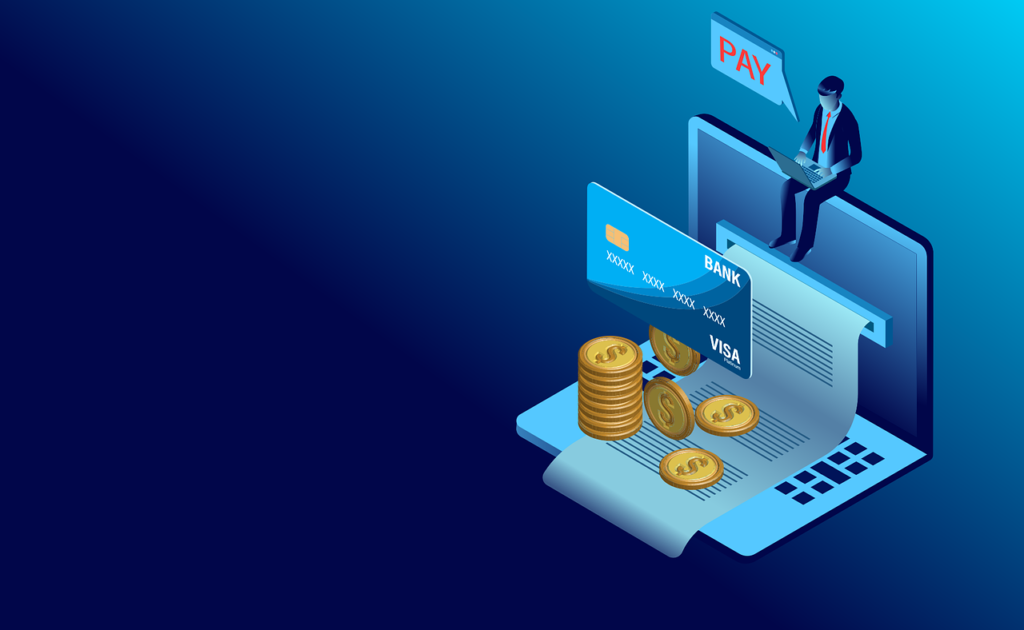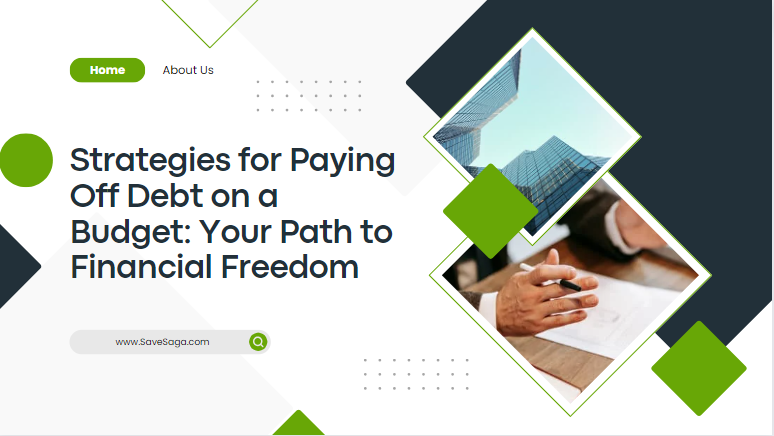Learn practical paying off debt strategies while managing a budget. Discover how to assess your debt, create a budget, and achieve financial freedom.
Debt, much like a heavy backpack, can feel like a constant weight, holding you back as you navigate the twists and turns of life. But rest assured, it’s a burden that many face, and it’s far from insurmountable. Armed with the right strategies and a well-structured budget, you can make significant strides towards financial freedom. In this comprehensive blog post, we’re not just going to talk about managing debt; we’re going to take a journey towards a brighter, debt-free future.
I. Assessing Your Debt: Shedding Light on Your Financial Situation
Understanding Your Debt: Know What You Owe
Dealing with debt is akin to embarking on a quest, and every hero needs a map. In our financial journey, that map starts with understanding the lay of the land. It’s crucial to know exactly what you’re up against:
- Types of Debt: Think of your debts as characters in a story. List them all, whether it’s credit card debt, those pesky student loans, the ever-looming mortgage, or even that long-forgotten outstanding bill.
- Interest Rates: These are like the villains in our story, siphoning off your hard-earned money. Take note of the interest rates attached to each debt; this information will be your compass, guiding you towards which debts to vanquish first.
- Minimum Payments: Think of minimum payments as the trolls guarding the bridge to your financial freedom. Determine how much you must pay each month to keep them at bay.
- Total Debt Amount: This is your dragon to slay. Calculate the grand total you owe; it’s your starting point on this epic quest to financial freedom.
II. Creating a Budget: Building the Financial Roadmap
The Budgeting Process: A Blueprint for Success
Creating a budget might sound like sitting down with spreadsheets and calculators, but it’s more like crafting a treasure map. You’re charting a course to financial treasure, and this map is your guide:
- Income Assessment: Imagine your income as the wind filling your sails. Begin by calculating your monthly income from all sources, whether it’s the gold you earn from your job, the treasures you find in side gigs, or the passive income streams that trickle in.
- Expense Tracking: As you journey through your financial landscape, you’ll encounter expenses, some essential like food and shelter, others not-so-essential like entertainment and dining out. Record them all meticulously and categorize them; it’s like marking points of interest on your map.
- Debt Repayment Allocation: Designate a portion of your income towards debt repayment. Think of it as equipping yourself with the best tools for your adventure – the sword and shield to fend off debt.
- Emergency Fund: In your budget, don’t forget to include building or maintaining an emergency fund. This is your safety net, your healing potion for when unexpected expenses ambush you on the road to riches.
III. Debt Paydown Strategies: The Battle Plan
The Snowball Method: Starting Small for Big Wins
Now, let’s talk strategy. Think of your debt as an army of adversaries, and you’re the fearless commander. The snowball method is your secret weapon:
- Start Small: Like any wise general, you’ll start by tackling the weakest link in your debt chain, regardless of interest rates. It’s about securing quick victories that boost your troops’ morale (and your own).
- Rolling Payments: As you defeat each debt foe, roll the spoils of victory into the next battle. This creates a snowball effect, where your payments grow in size and power with each conquered debt.
- Consistent Progress: Over time, your debt payments will snowball, leading to more substantial debt reduction. It’s like watching your army grow as it marches towards victory.
The Avalanche Method: Prioritizing High-Interest Debt
Now, imagine you have a skilled archer in your arsenal, ready to target the most dangerous foes. That’s the avalanche method:
- Interest Rate Focus: In this strategy, you target the debt with the highest interest rate first. It might take a bit longer to see results, but think of it as strategically eliminating the most powerful enemy first.
- Long-Term Savings: This isn’t just about winning battles; it’s about winning the war with minimal casualties. By tackling high-interest debt first, you save more money in the long run, which you can divert towards your future prosperity.
Debt Consolidation: Simplifying Your Financial Landscape
Debt consolidation is like assembling a league of allies to join your cause. Here’s how it works:

- Combine Debts: Imagine merging your debt foes into a single, unified force. Debt consolidation brings multiple debts together into one lower-interest loan, streamlining your financial landscape.
- Lower Interest: Lowering the interest rates is like making your enemy weaker. Debt consolidation makes your debt more manageable, giving you the upper hand in battle.
- Single Payment: With just one monthly payment to manage, it’s like having a single army to command instead of multiple factions. It simplifies your financial strategy.
IV. Cutting Expenses and Increasing Income: Finding Room to Breathe
Trimming the Fat: Making Your Budget Leaner
On your quest for financial freedom, it’s time to cut some excess baggage. Think of these steps as shedding armor to move faster:
- Budget Review: Regularly reviewing your budget is like sharpening your sword; it keeps you ready for any financial battle. Identify areas where you can cut back and reallocate those resources to your primary mission.
- Subscription Audit: Are unused subscriptions draining your coffers? Cancel those you no longer use or need. Every coin saved is a step closer to your treasure.
- Cook at Home: Imagine cooking at home as foraging for supplies along the way. Eating out less and cooking at home leads to significant savings and ensures you’re well-provisioned for your journey.
- Carpooling and Public Transport: Reducing transportation costs is like finding a shortcut on your quest. Consider carpooling or using public transport to save money for the battles ahead.
Exploring Side Hustles: Boosting Your Income
In your quest, you may encounter opportunities to bolster your resources. Think of these side hustles as quests within your greater adventure:
- Freelancing: Utilize your skills for freelance work or consulting. It’s like taking on extra quests to earn more gold for your treasure chest.
- Part-Time Jobs: Seek part-time employment or gig work to increase your cash flow. It’s like sending scouts out to gather valuable resources for your journey.
- Online Ventures: Explore online businesses or find ways to monetize your hobbies. In the digital realm, there are endless opportunities to accumulate wealth and gear for your adventure.
V. Staying Committed: Navigating the Challenges
The Importance of Discipline: Staying the Course
As you journey towards your financial treasure, discipline is your trusty compass. It ensures you stay on the right path:
- Stick to Your Budget: Discipline yourself to stay within the boundaries of your budget. Avoid the temptation of overspending, and you’ll stay on the course to financial victory.
- Set Milestones: Think of milestones as checkpoints on your quest. They help you gauge your progress and provide a sense of achievement. Celebrate each one; they’re like the markers on a treasure map.
- Accountability: Sharing your goals with a trusted friend or family member is like having a fellow adventurer by your side. They can hold you accountable and provide much-needed support during challenging times.
- Celebrate Achievements: Don’t forget to reward yourself when you reach significant milestones. It’s like taking a moment to admire the breathtaking views on your journey – a reminder of how far you’ve come and motivation for what lies ahead.
VI. Dealing with Setbacks: The Bumps on the Road
Resilience in the Face of Challenges: Handling the Unexpected
In any great adventure, there are bound to be setbacks. Your resilience is your armor in the face of adversity:
- Emergency Fund: Think of your emergency fund as a hidden stash of potions and elixirs. When unexpected expenses ambush you, draw on this fund instead of resorting to more debt.
- Adjust the Plan: Just as a captain adjusts the sails in a storm, be ready to adapt your budget and repayment plan if your financial situation takes an unexpected turn. Flexibility is your greatest asset.
- Seek Support: Facing a formidable opponent? Don’t hesitate to seek financial advice or counseling. Think of it as consulting with wise sages who can provide guidance and help you overcome challenges.
VII. Celebrating Success: A New Beginning
A Debt-Free Future: Embracing Financial Freedom
Reaching the end of your debt journey is like discovering the fabled treasure chest at the journey’s end. It’s a momentous occasion:
- Freedom: Savor the taste of financial freedom and reduced stress. It’s like shedding the heavy armor you wore throughout your quest.
- Invest and Save: Redirect the money that once went towards debt payments into savings and investments. Imagine it as planting the seeds of future prosperity, ensuring your wealth grows over time.
- Financial Goals: Set new financial goals and work towards them with the discipline and knowledge you’ve gained. It’s like embarking on a new adventure, but this time, you’re the seasoned explorer, ready to conquer new horizons.
Conclusion
In conclusion, the path to financial freedom through debt reduction and budget management requires careful planning, discipline, and resilience. Start by assessing your debt and creating a budget that fits your financial situation. Choose a debt repayment strategy, like the snowball or avalanche method, and consider debt consolidation if it suits your needs. Cutting unnecessary expenses and exploring additional income sources can speed up your progress. Stay committed, celebrate milestones, and be prepared for setbacks. Ultimately, achieving a debt-free future brings financial freedom and the ability to invest in your future. Remember, it’s a gradual process that rewards patience and determination. Take the first step today for a more secure financial future.
FAQs: Answers to Your Burning Questions
Is it advisable to take on more debt, such as a personal loan, to pay off credit card debt?
It depends on the interest rates and terms of the new loan. Consult a financial advisor to evaluate if this strategy is suitable for your situation. Think of it as seeking counsel from wise advisors on your quest.
What should I do if I face unexpected medical bills while paying off debt?
Use your emergency fund to cover medical bills to avoid adding to your debt. If your emergency fund isn’t sufficient, negotiate payment plans with medical providers. It’s about finding allies in times of need.
Can debt consolidation affect my credit score?
Initially, it may cause a minor dip in your credit score, but as you make consistent payments, it should improve. Think of it as a temporary storm on your financial journey.
How much of my income should I allocate to debt repayment in my budget?
A common guideline is to allocate around 20% of your income to debt repayment, but adjust based on your financial situation. It’s about finding the right balance for your unique quest.
Is it better to pay off high-interest debt first, even if it’s a smaller amount?
Yes, prioritizing high-interest debt saves you more money in the long run, even if the debt amount is smaller. It’s like cutting off the head of the most dangerous dragon first.
Free Invoice Template for Excel: Streamline Your Billing Process
In the fast-paced world of business, efficiency and accuracy in billing are paramount. At SaveSaga,…
20+ Budget-Friendly Gift Ideas for Every Special Occasion
Unlock the secret to heartfelt gifting without breaking the bank. Explore our guide for creative,…
30+ Ways to Make $1000 Fast in 2024: Legal, Legit, and Lucrative
#MAKE MONEY Make $1000 fast Are you struggling to make ends meet? Do you need…
How to Create a Budget as a College Student, 13 best ways
In the whirlwind of college life, Budget as a College Students can be a daunting…
8 Proactive Strategies On How To Protect From Inflation For Financial Stability
Explore proactive budgeting and investment strategies on how to protect from inflation and to maintain…
Decoding Fixed And Variable Expenses: Achieving Financial Stability Through Smart Budgeting
Master the art of financial stability with our guide on budgeting. Explore the balance between…
Proudly powered by SAVESAGA







Pingback: The Importance of Emergency Funds in Your Budget
Pingback: Dave Ramsey's Envelope System
Pingback: Mastering Your Money: The Ultimate Guide to Budgeting Success
Pingback: Crush Your Budget Goals with 4 Proven Monthly Expense Reduction Techniques -
Pingback: SsaveSaga 8 Proactive Strategies On How To Protect From Inflation For Financial Stability